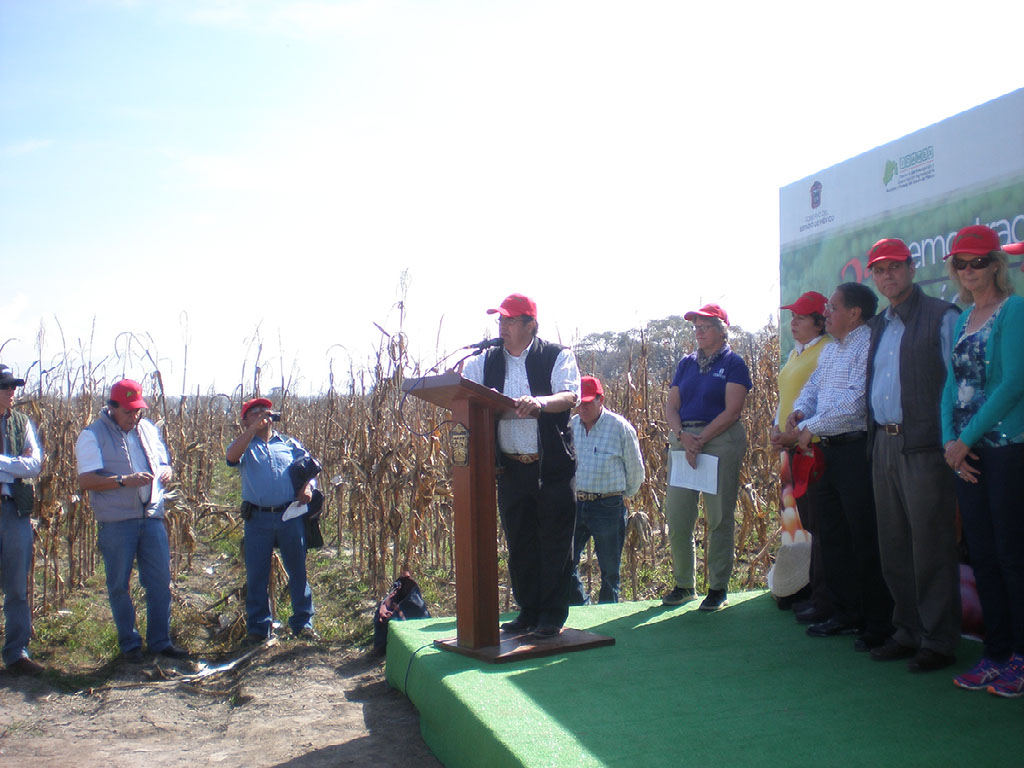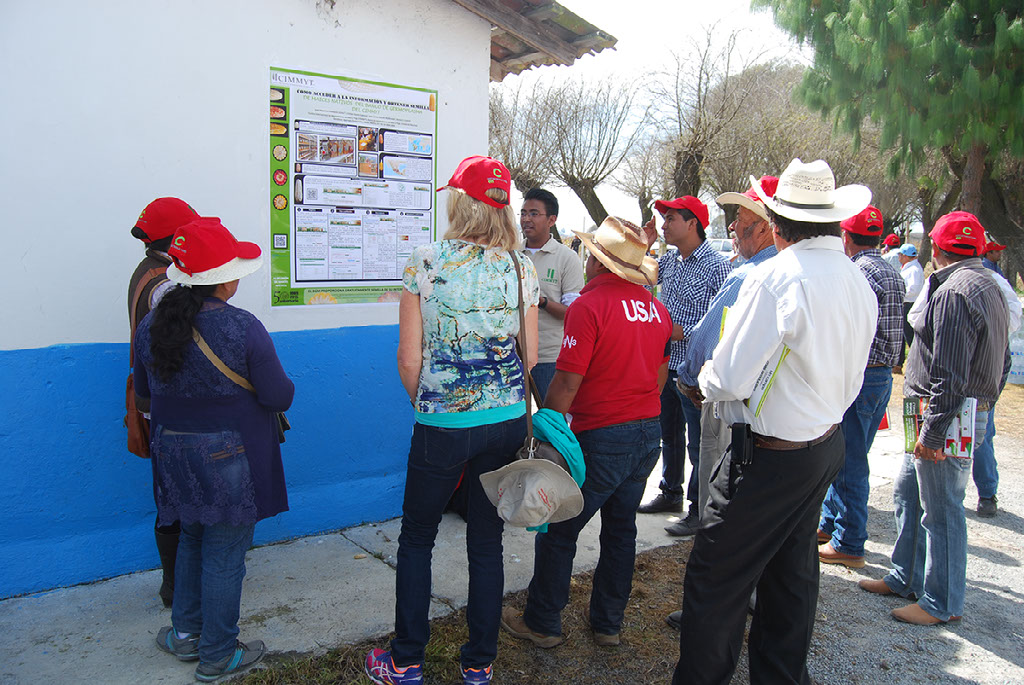Toluca Field Day 2015 using highland maize to help local farmers
Mexico is the center of origin of maize, and is home to some of the most diverse varieties found anywhere in the world, adapted over time to perform well under local conditions. Many of these varieties have been collected and stored by CIMMYT’s maize germplasm bank to safeguard the valuable traits they possess, and have been utilized in breeding programs in Mexico and all over the world to create improved varieties and hybrids to meet producers’ specific needs in various environments.
However, many local producers in the highland regions of Mexico are not aware that these varieties even exist. “We came here and realized that local producers were planting unimproved native varieties, which made me wonder: ‘What ever happened to the improved varieties that were developed specifically for highland regions?’” said Denise Costich, head of CIMMYT’s maize germplasm bank. “What if we could take our highland materials from the germplasm bank and use them to help local farmers?”

To showcase highland maize varieties held in the CIMMYT germplasm bank to local producers, CIMMYT, in partnership with ICAMEX (Spanish acronym for Agricultural, Livestock, and Fishery Research and Training Institute), held its second annual field day at the Toluca Experiment Station, state of Mexico, on 18 November 2015.
“We want to put these materials back in the hands of local farmers, as this is where the material is originally from,” emphasized Pedro Mijares Oviedo, Director General of ICAMEX, in his welcome address. The event was attended by 136 local producers, students, and agricultural technicians who examined the varieties and took note of any they themselves would be interested in adopting. Over 177 varieties from highlands of Mexico and South America were showcased at the event, ranging from large “cacahuacintles” used to make pozole, a traditional maize stew, to “palomeros,” used to make popcorn.
During the event, visitors were also taught how to request seeds from CIMMYT’s online catalog, as well as how to create their own F1 hybrids by crossing different varieties. “Our mission at the bank is not just moving the germplasm, but to teach people how to use it themselves,” explained Costich.
The final results of the variety preference survey found that the number one preferred variety among participants was a yellow highland maize variety from a breeding program in Ecuador, followed by a white variety created here in Mexico by crossing a pool of Andean accessions. Also popular were several cacahuacintles. Some of the preferred varieties have average yields as high as 8 tons per hectare (t/ha), a vast improvement on the regional average of 3 t/ha.

“We have a lot of accessions like this in the bank, but no one really requests them because no one knows they exist,” said Costich. “That’s what we’re trying to do with our demonstration days: we want to get this material out there, see what it looks like and see if it is useful.”
Next year the plan is to conduct individual trials in farmers’ fields, working directly with a group of 10 interested local producers to see how well the materials do under local conditions. Seed from the preferred varieties of the 2014 demonstration day will be available to farmers in 2016, and seed from this year’s winning varieties will be available by spring 2017.
